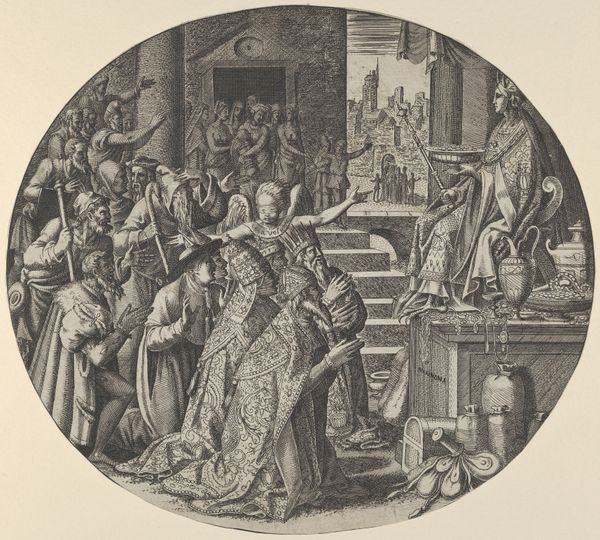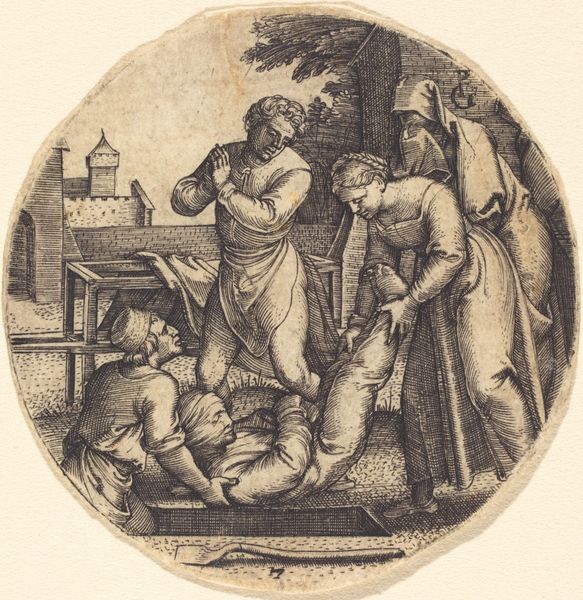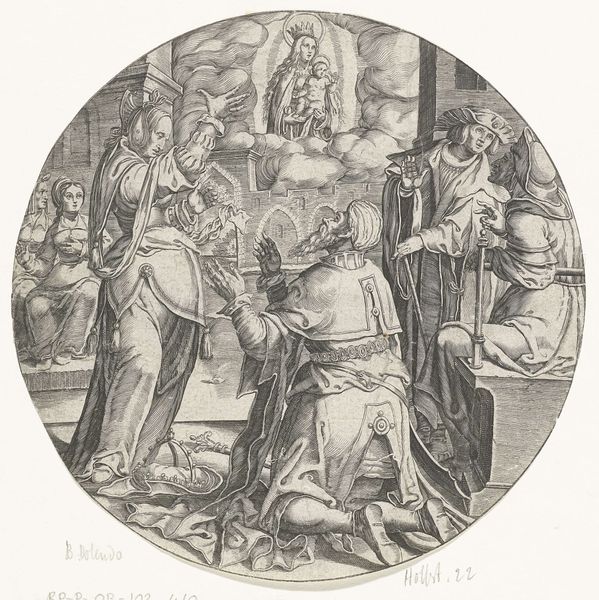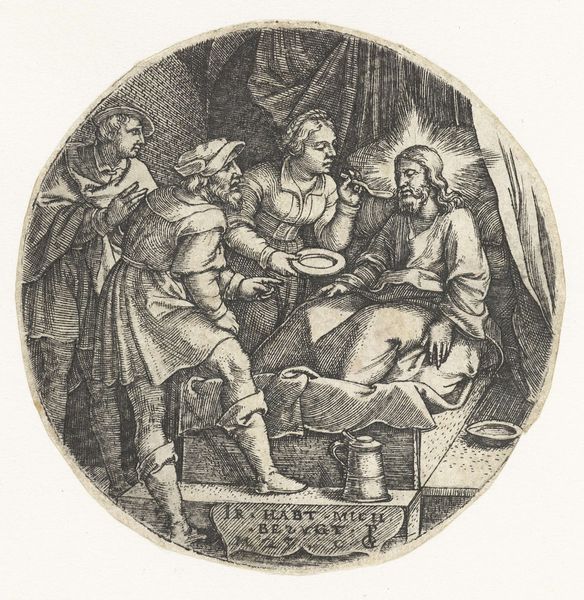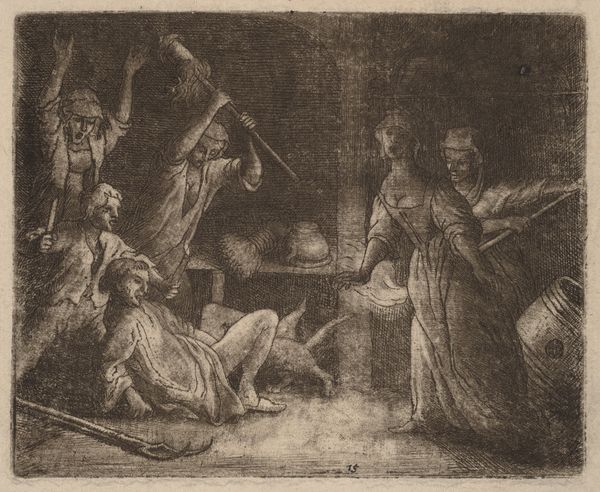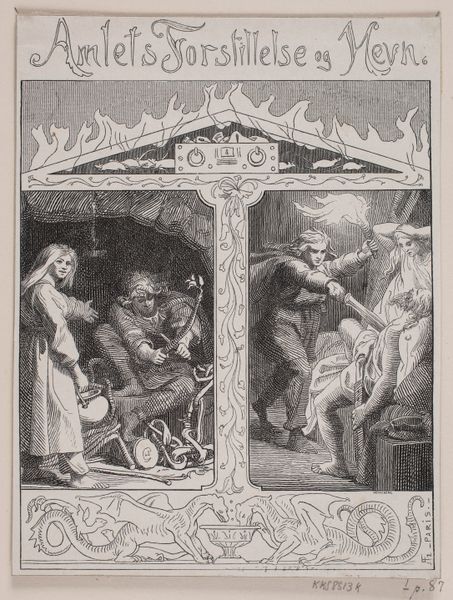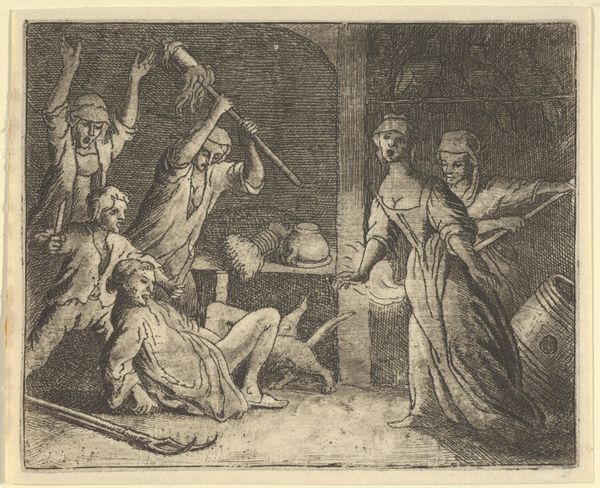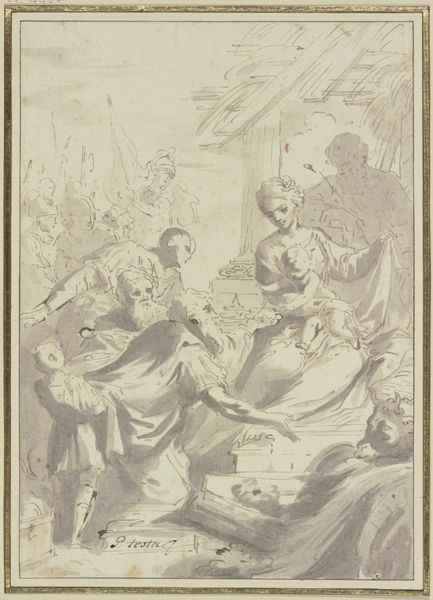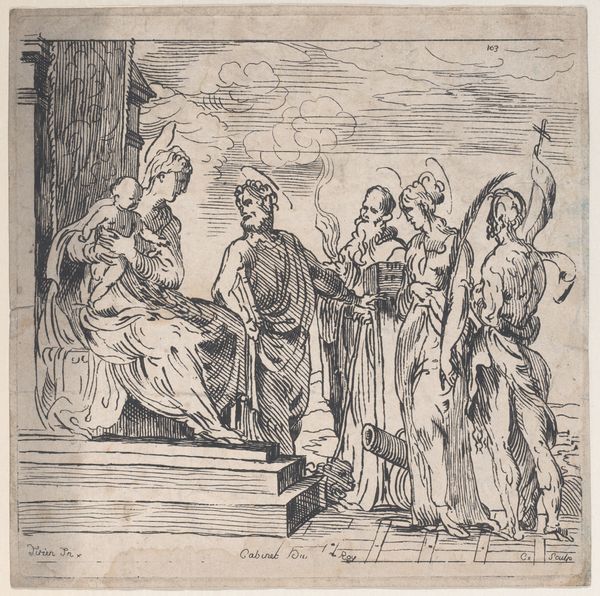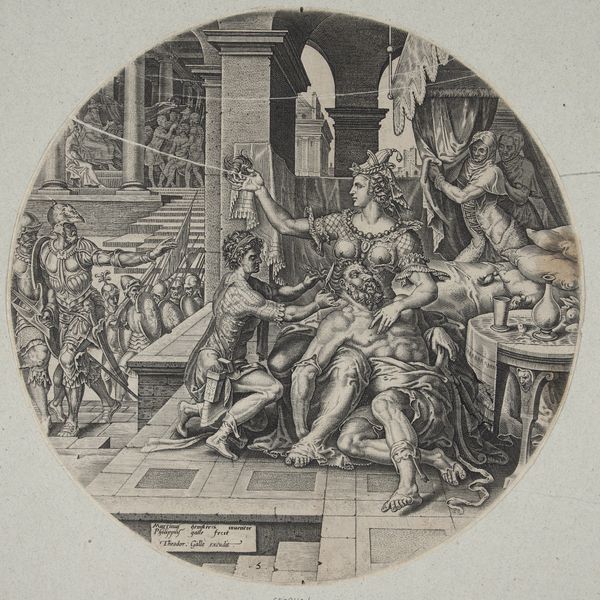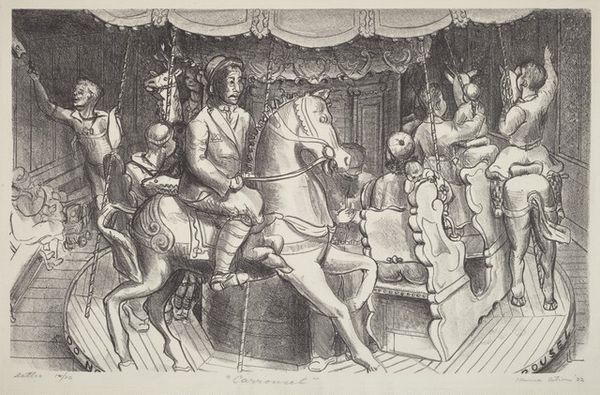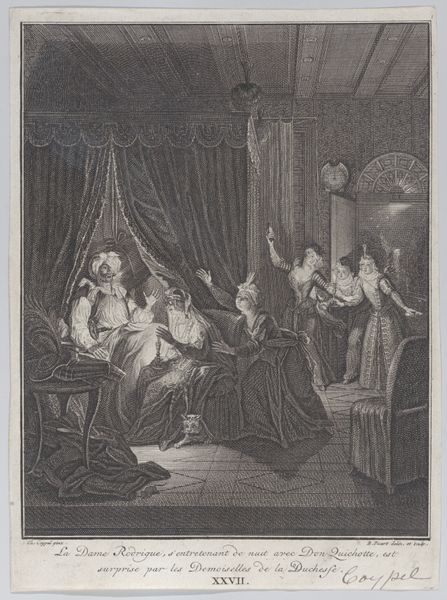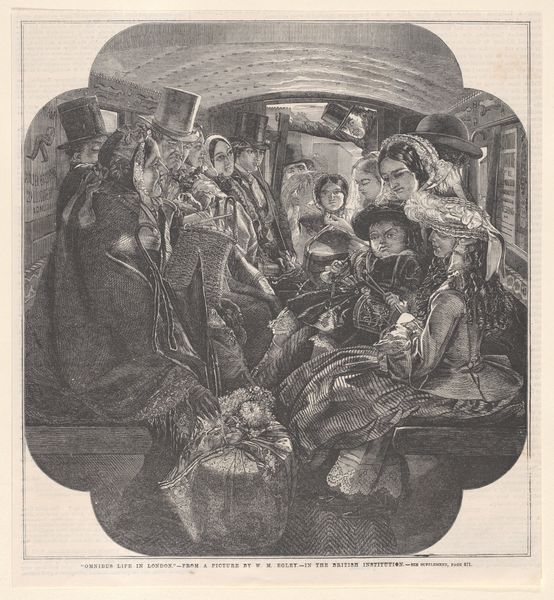
drawing, print, paper, engraving
#
drawing
#
medieval
# print
#
figuration
#
paper
#
line
#
genre-painting
#
engraving
Dimensions: 172 × 172 mm (plate/sheet)
Copyright: Public Domain
Curator: Let's turn our attention to "The Morris Dancers," an engraving of indeterminate date, currently residing here at The Art Institute of Chicago. It is believed to be the work of Israhel van Meckenem. Editor: My initial reaction is one of controlled chaos. There's a circularity to the composition, reinforced by the tondo format, yet the figures themselves are rendered with dynamic lines suggesting a frenzied energy. The light seems uniformly distributed, emphasizing the intricacy of each form. Curator: Precisely. The artist masterfully employs line—evident throughout—to define form, texture, and depth within this essentially monochromatic print. One notes the figures frozen mid-motion. Their gestures are exaggerated, contributing to a compelling overall rhythm, even dance itself, if you will. Editor: But how does this festive scene reflect its historical context? The Morris Dance was a tradition in parts of Europe... Was this simply entertainment, or did it carry deeper social significance? And who were the observers perched within? It almost creates this "theater in the round," separating classes as much as they unify. Curator: Intriguing points, all! Such genre paintings were often didactic, offering a visual commentary on societal norms, morality, and hierarchy. The line work is meticulous. Consider how the artist differentiates textures—the draped robes of the central woman contrasted to the capering costumes of the male dancers. What visual or cultural statement does such detailed costuming suggest? Editor: The placement of the female figure certainly grabs attention, almost in contradistinction with the rest of the group! Note that van Meckenem has constructed her stillness amid all the raucousness of his other characters! Are these intentional binary visual contrasts a clue into decoding this medieval puzzle? Curator: Possibly. Consider also the interplay of gazes. Who is looking at whom, and how do those relationships shape the narrative of the image? The engraver forces us to examine each relationship. We ask, "What commentary about relationships is this engraving meant to display to us?" Editor: Indeed. By visually disentangling the composition and contemplating its cultural setting, one can uncover nuanced implications that exist above its literal theme. Fascinating work! Curator: Indeed. As you walk onward, I implore you to reflect how such prints offer visual pathways into worlds long gone and lost, inviting us to see afresh even seemingly “simple” everyday pastimes of ordinary people.
Comments
No comments
Be the first to comment and join the conversation on the ultimate creative platform.
